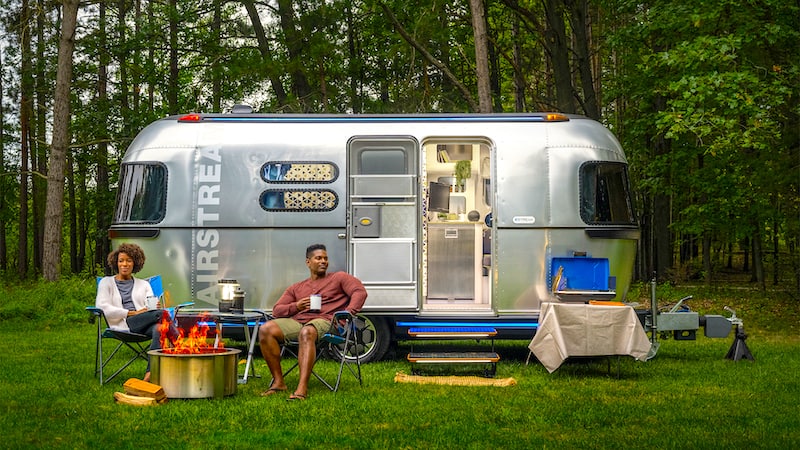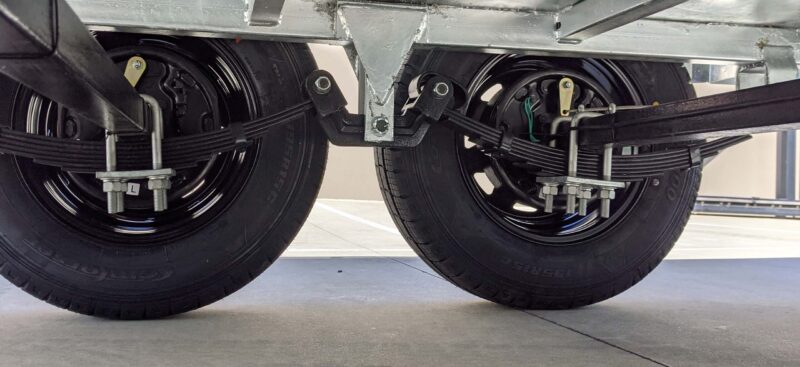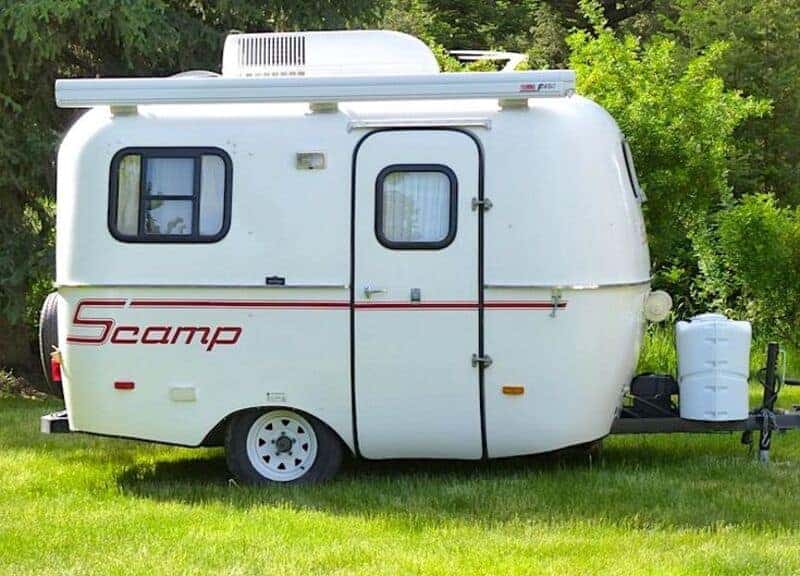With Elon Musk and Tesla recently unveiling their new electric semi, you have to figure there’s an all electric travel trailer on the way soon enough. The fact is, they’re already here, and the selection is broader than you might imagine.
Since the day the FBI stormed Nikola Tesla’s apartment, seizing his notes and materials shortly after his death, the world has been fascinated by the limitations of electricity. While Thomas Edison was more of a battery guy than Tesla, it’s Tesla’s namesake ushering us into the future of battery power.
An electric travel trailer is everything you would expect in a standard travel trailer, but there are differences, some more subtle than others. This is especially true if you enjoy the boondocking life, where battery power is nearly as essential as water in the desert.
What is an All-Electric Travel Trailer?
The concept of an electric travel trailer is nothing new. After all, whether it’s an electric travel trailer or not, all of them require electricity to function. It’s just a matter of how much electric power comes from batteries, how much from fuel, and/or a local power supply.
In other words, to qualify as an electric travel trailer, it has to power itself off the grid, with no plug-in sources and no fuel from a generator. It’s not much of an “electric” travel trailer if you’re burning through gallons of gasoline every day.
Is There an EV RV on the Market?
While electric travel trailers make a lot of sense, when compared to the marketing and production movements of the vehicle industry, there aren’t many of them. There are some, however, with Airstream (Thor) leading the way by introducing the new Airstream eStream.
A company known as Lightship is known for “bringing RVs into the electric age.” But, if you visit their site, you’ll see a decidedly grainy view of a mountain, a career opportunity tab, and a YouTube video. No RVs. Exciting stuff, to be sure.
To be fair, Lightship has poured a lot of money into the “Series A,” their first all-electric travel trailer. They also linked to a video of it on YouTube. Strangely enough, it’s not even Lightship’s all-electric travel trailer—Polydrop makes it. It’s a teardrop trailer for certain, and there’s not much to see on the outside.
ERV is the company making the most headway, aside from Airstream, with their upcoming, aptly-named “ERV.” Somebody needs a more creative model designator.
Who Makes EV Travel Trailers?
So far, we’ve covered Airstream—in coordination with Thor—EVR, and Lightship. Bowlus, known for their ludicrously expensive luxury travel trailers, unveiled the “Voltera,” which will likely require selling one of your kidneys on the black market to afford it.
Polydrop is a relatively new travel trailer and manufacturer, and they already have an all-electric teardrop on the market known as the P17A. OzX Corp and Living Vehicle are rolling out some models as well. That’s pretty much the end of the line in terms of up-and-coming EV travel trailers.
Check out this YouTube video below to see the all electric travel trailer from Bowlus called the Voltera.
Pros and Cons of an EV Travel Trailer
One of the most obvious benefits is the ability to go off the grid, at least for a time. Boondocking is short and sweet, and you’re generally on the move again the next day. Staying off the grid is more difficult in the short and long term. There are other pros and cons as well.
Pros
- Sizeable batteries and solar setups
- Ability to go off-grid longer
- Reduced emissions
- Less maintenance
- Reduced Noise Pollution
- Recharging is more affordable
Cons
- Redundant systems are required
- Backup systems are required
- High initial investment
- Lack of charging stations
- Batteries cycle every 3 to 10 years
Redundant and backup systems are the most important factors to point out. Any self-sustaining EV requires solar to keep the batteries charged, and unless you live on top of the clouds, the sun won’t cooperate 100% of the time.
Where Would You Charge an EV Travel Trailer?
For the most part, charging takes place through the solar array that comes with the EV travel trailer. However, as we mentioned above, the sun doesn’t always come out to play. Most campgrounds have 50A/240V, 30A/120V, and 20A/120V outlets.
If you’re off the grid, you’ll need backup systems—most likely propane and gas-fueled generators if the lights are going out and it’s been cloudy for three days straight. Outside of that, there are supercharger stations scattered across the U.S., though they aren’t as prevalent as gas stations.
Can You Boondock with an All-Electric Travel Trailer?
EV travel trailers are just as suited to boondocking as standard travel trailers. You might run into problems specific to smaller travel trailers—not as much water and supplies found in a typical campground setting.
Your ability to charge the batteries is much easier in an EV travel trailer, but there’s no distinct, separating factor between EV and standard travel trailers when boondocking.
How Long Will the Battery Supply Power to an EV Travel Trailer?
Most EV travel trailers, outside of simple teardrops, are still in the concept stage. In other words, there’s not a lot of real-world data to go off of. The eStream, for instance, will have a total of 900-watt photovoltaic solar panels on the roof. This will trickle charge the 80kWh battery under the floor.
EV teardrops have batteries that run all day. However, you won’t run nearly as much in a teardrop as you will in a larger, more traditional-sized travel trailer. Unfortunately, an exact-number answer remains unclear.
Are Fully Electric Travel Trailers the Future of RVs?
It’s very doubtful for three reasons—first, even with the booming electric vehicle industry, only 1% of all cars on the roads today are electric. Think about that. The EV business is over a decade old, and 1% is the grand total. EV travel trailers are barely beyond the concept stage.
Second, the infrastructure isn’t there, at least not yet. A worldwide transportation network featuring millions of electric vehicles and electric travel trailers would require a staggering amount of electricity. Right now, that electricity can only be siphoned from the coal industry, various fossil fuels, nuclear, and hydroelectric.
Last but not least, some uncomfortable decisions are on the way. By 2020, Scotland alone wiped out 14,000,000 trees to make way for wind and solar. If there’s a future with all-electric vehicles and EV travel trailers, someone must figure out the careful balance between the two.



